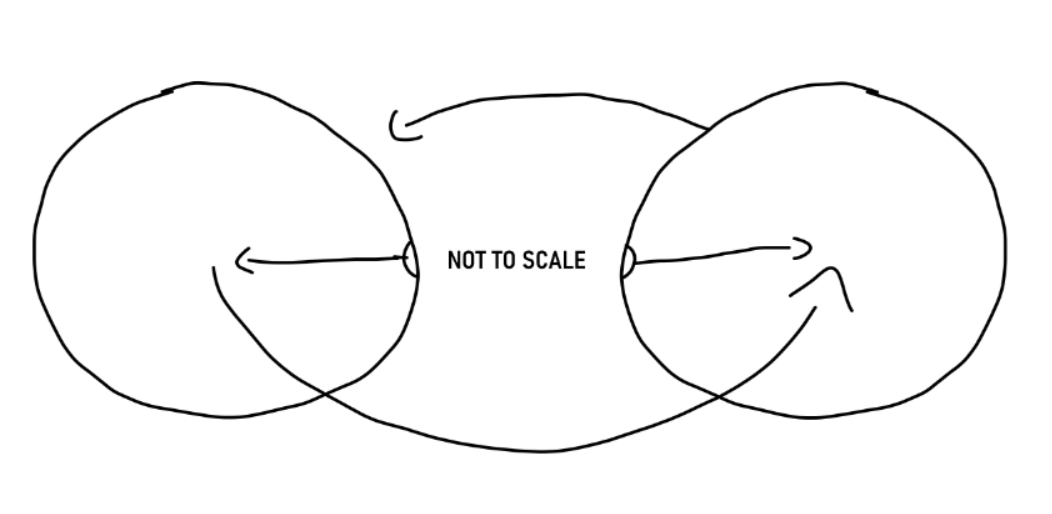Specifically, would one side of the planet have less gravity than on the other?
Trivially: yes. This is true on Earth... sensitive weighing scales can sense the moon, because as it passes overhead things get slightly lighter. On your binary world, you'll be lightest on the bits of a world's surface that have the other world directly above. Quite where you'd be heaviest I'm not quite sure... not quite on the point of a world furthest from the other (because the gravitational influence of the other world is at a minimum there), but I can't intuitively tell what the gravitational potential looks like as you travel around the world and I'm too lazy to simulate it.
You might lean a little sideways on the "poles"... but it isn't clear what would mark the poles anyway, as the bodies will be tidally locked (so no axis of rotation), and as they don't rotate nicely they might not have a geodynamo to provide magnetic poles, and they might not even have an axis of symmetry perpendicular to the line joining the two barycenters. The only real "poles" are the points on either world maximally distant from the other world.
Let's say there's 2 planets orbit eachother as close as possible so they're oval shaped
One key thing for two similarly massive bodies close together though is that you don't always get the two-tidal-bulge shape that AlexP included, but instead the bits of the two bodies that are closest together get drawn even closer together. This inside bulge is called a Roche lobe. The more fluid (or at least plastic) the body is, the more pronounced the effect will be. As you travel "up" the lobe towards the L1 Lagragian point between the two worlds apparent gravity will decrease until it becomes effectively zero.
I'm not sure how likely this is for a binary planetary system, but it isn't uncommon in binary stellar systems. Here's a diagram of the gravitational potential between two massive bodies... specifically stars in this case, but in a pinch it might do for planets, too.

If you've not heard of Rocheworld, then that setting and discussion around it might be a good source of further information. There's plenty go on even on this site alone, eg. How would sunlight work in the area of shared atmosphere of a Rocheworld? or How Would It Feel To Walk On A Rocheworld?.



